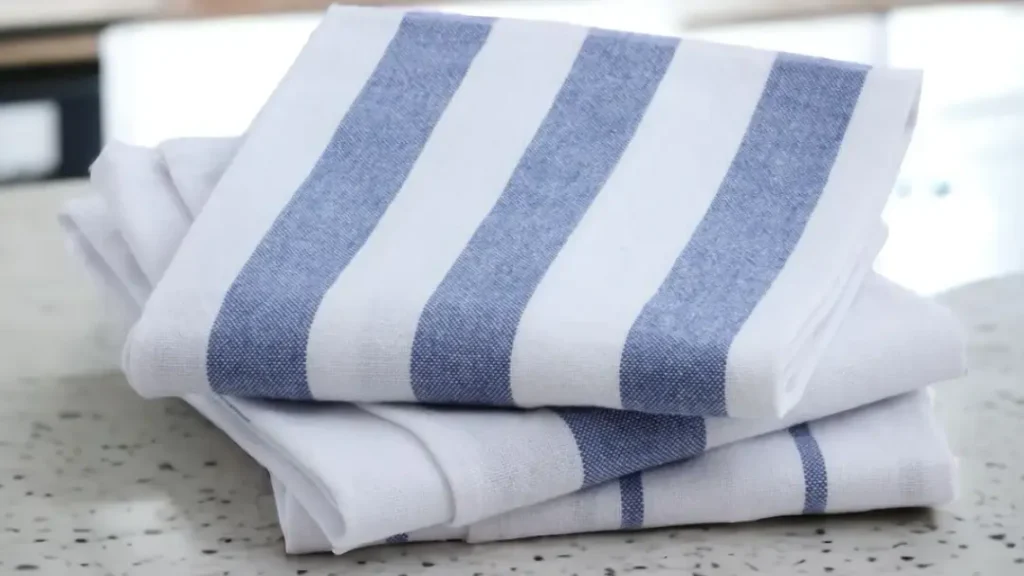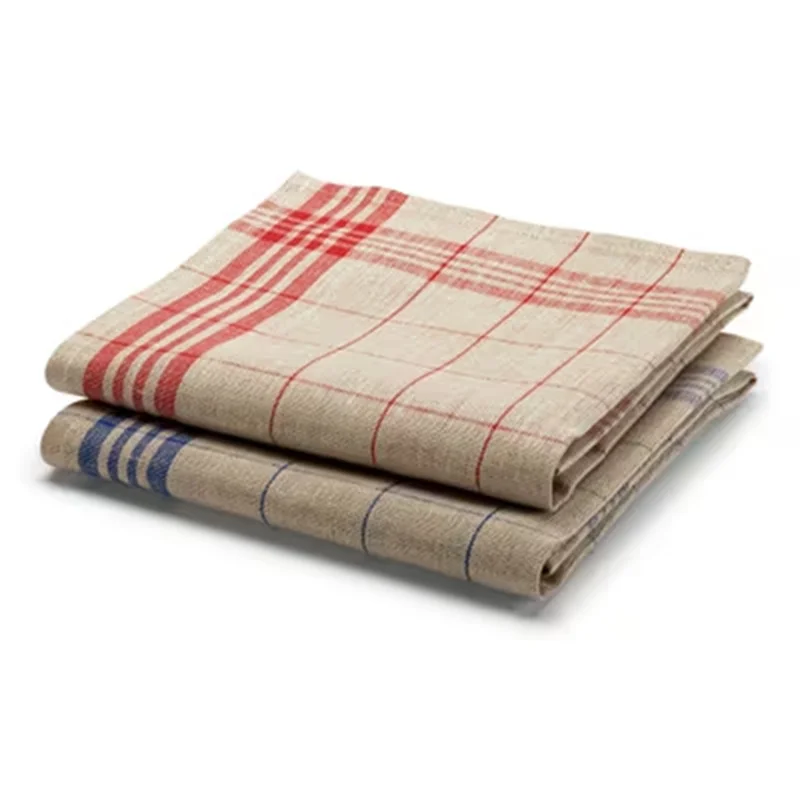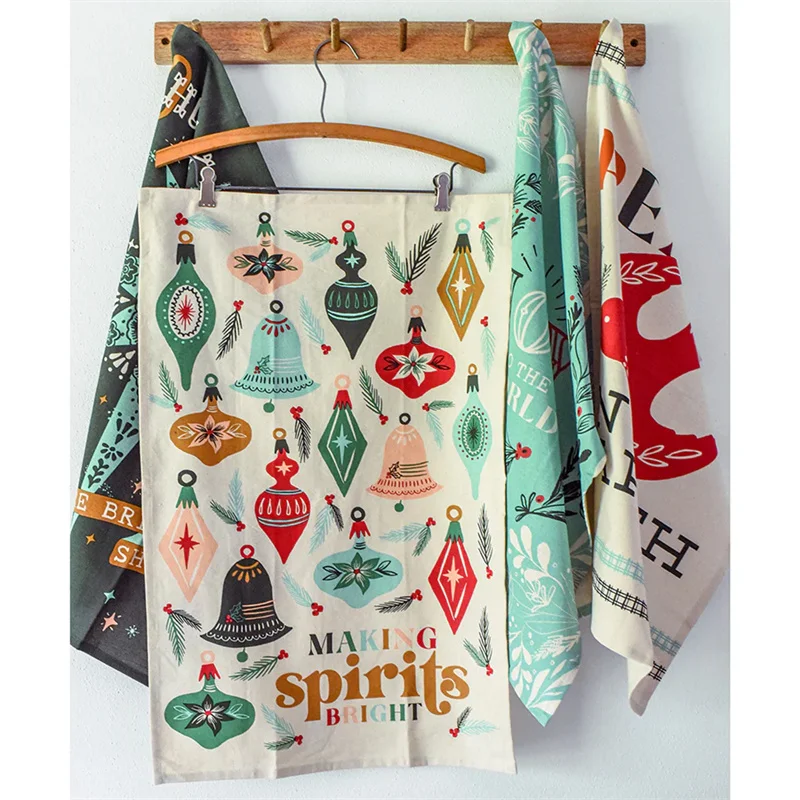Tea towels, a kitchen essential, are more than just absorbent cloths. The right fabric elevates their functionality and aesthetic. This guide delves into the diverse world of tea towel fabrics, exploring their properties and best uses.
From classic cotton to durable linen, understanding fabric choices is key. We’ll uncover the secrets to selecting the perfect material, ensuring your tea towels are both practical and stylish additions to your home.
What is Tea Towel Fabric

Tea towel fabric refers to the materials specifically chosen for their absorbency, durability, and lint-free qualities, making them ideal for drying dishes and hands. Common choices include cotton, linen, and cotton-linen blends. These fabrics are woven in ways that maximize their ability to soak up moisture and withstand frequent washing.
The selection of tea towel fabric impacts both functionality and aesthetics. A well-chosen fabric ensures efficient drying and a pleasant tactile experience, while also contributing to the overall kitchen décor. Factors like weave density, fiber type, and fabric weight play crucial roles in determining a tea towel’s performance and longevity.
What Fabric Are Tea Towels Made Of
Tea towels are typically made from fabrics that prioritize absorbency, durability, and minimal lint production. Here what fabric is used for tea towels:
- Cotton is a popular choice due to its excellent absorbency and durability.
- Variations like cotton twill and flour sack cotton are frequently used.
- Linen is another traditional material known for its strength, absorbency, and lint-free properties.
- It’s particularly favored for polishing glassware.
Cotton-Linen Blends:
- Combining the benefits of both cotton and linen, these blends offer a balance of absorbency and durability.
Essentially, the goal is to use natural fibers that can withstand frequent washing and effectively dry dishes and hands.
Different Uses for Tea Towels
Tea towels are incredibly versatile, extending far beyond their traditional role in the kitchen. Here are tea towel fabric diverse uses in the following:
In the Kitchen:
- Drying dishes and hands: This is the classic use, where their absorbency shines.
- Covering rising dough: They provide a breathable cover, preventing the dough from drying out.
- Drying salad greens: They can effectively absorb excess moisture.
- Acting as potholders or trivets: Folded, they offer protection from hot surfaces.
- Keeping baked goods warm: Wrapping bread or muffins in a tea towel helps retain heat.
- Lining baskets and trays: Adding a touch of elegance and absorbing spills.
- Cleaning and polishing: Their lint-free nature makes them ideal for delicate surfaces.
Beyond the Kitchen:
- Gift wrapping: Using the Japanese “furoshiki” technique, they make beautiful and eco-friendly wrapping.
- Decorative purposes: They can add a pop of color and style to any room.
- Improvised napkins or placemats: Offering a reusable and stylish alternative.
- Protecting delicate items during storage or travel: They provide cushioning and prevent scratches.
- As a barrier between cutting boards and counter tops: Preventing the cutting board from sliding.
- As a substitute for paper towels: Offering a reusable and enviromentally friendly option.
Tea towels are truly multi-purpose, making them a valuable addition to any household.
What to Do With a Tea Towel Fabric
Tea towel fabric, whether purchased in bulk or repurposed from old towels, offers a wealth of crafting and practical possibilities. Here’s what you can do with tea towelling fabric:
Practical and Household Uses:
- Create new tea towels: Obviously! You can sew your own, customizing size, design, and finish.
- Make napkins or placemats: Cut and hem the fabric to create reusable dining accessories.
- Sew reusable cleaning cloths: Replace disposable paper towels with durable, washable cloths.
- Craft fabric produce bags: Create eco-friendly bags for grocery shopping.
- Make small kitchen accessories: Pot holders, oven mitts, or even simple aprons.
Crafting and Decorative Projects:
- Embroider or print designs: Personalize tea towels with custom artwork or monograms.
- Sew decorative pillows or cushion covers: Add a touch of rustic charm to your home decor.
- Create fabric gift bags: Use tea towel fabric for unique and reusable gift wrapping.
- Make patchwork quilts or wall hangings: Utilize smaller pieces of fabric for creative projects.
- Sew simple curtains or window valances: Add a light and airy touch to your windows.
- Make fabric covered notebooks, or journals.
Repurposing and Upcycling:
- Patch or mend clothing: Use the fabric for durable patches.
- Create reusable fabric snack bags or lunch wraps.
- Make simple baby bibs or burp cloths.
The key is to consider the fabric’s properties—absorbency, durability, and texture—and match them to your desired project.
How to Care about Your Tea Towels



Caring for your tea towels properly extends their lifespan and ensures they remain hygienic. Here’s a comprehensive guide:
Washing:
Frequency and Temperature:
The frequency of washing directly impacts hygiene. In a household with frequent cooking, daily washes are crucial to prevent bacterial buildup. Hot water, ideally around 60°C (140°F), is effective in eliminating most germs. However, always refer to the fabric’s care label, as some delicate linens or colored cottons might shrink or fade at such high temperatures.
For colored towels, a warm wash (around 40°C or 104°F) with a color-safe detergent is a safer approach. When dealing with heavily soiled towels, consider a pre-soak in hot, soapy water before the main wash cycle. This allows stubborn stains and food particles to loosen, ensuring a more thorough cleaning.
Detergent and Stain Removal:
Selecting the right detergent is key. Biological detergents, containing enzymes, are particularly effective in breaking down food stains and grease. However, they may be too harsh for delicate fabrics. A mild, non-biological detergent is a gentler alternative. Avoid using fabric softeners, as they leave a residue that reduces the towel’s absorbency.
For stubborn stains, immediate action is crucial. Blot spills rather than rubbing them to prevent spreading. For protein-based stains like blood or dairy, cold water is essential to prevent setting. For oil-based stains, a pre-treatment with a degreasing agent or a paste of baking soda and water can be effective. When using bleach alternatives on white towels, ensure they are compatible with the fabric type to prevent damage.
Drying:
Ironing and Storage:
Ironing, especially while the towels are slightly damp, not only removes wrinkles but also helps to sanitize the fabric by killing any remaining bacteria. A hot iron also helps to flatten the fibers, restoring the towel’s smooth texture. When storing tea towels, ensure they are completely dry to prevent mold and mildew growth.
Folding them neatly not only saves space but also keeps them organized. Store them in a well-ventilated drawer or cupboard to maintain freshness. Avoid storing them in damp or musty areas. After use, always hang tea towels to allow them to air dry thoroughly. Never leave them crumpled in a heap, as this creates an ideal environment for bacteria to thrive. Rotate your tea towels regularly to ensure even wear and tear.
Line Drying and Tumble Drying:
Line drying is the most gentle method, preserving the fabric’s integrity and reducing energy consumption. Natural sunlight also acts as a natural sanitizer, further enhancing hygiene. When line drying, avoid direct, intense sunlight for colored towels, as it can cause fading.
If tumble drying is necessary, opt for a low to medium heat setting to prevent excessive shrinkage and wrinkling. Over-drying can also weaken the fabric fibers, leading to premature wear. Adding dryer balls to the tumble dryer can help to circulate air and reduce drying time, while also minimizing wrinkles. Remove the towels from the dryer promptly to prevent them from becoming overly creased.
Where to Buy Tea Towel Fabric
When looking to purchase tea towel fabric, you have several options, catering to various needs and preferences. Here are common places to find these tea towel materials:
Online Marketplaces:
Amazon:
Offers a wide selection of pre-made tea towels and bulk fabrics, including flour sack cotton and linen blends. You can find various brands and price points.
Etsy:
A great place to find unique and handmade tea towel fabrics, often with custom designs and artisanal quality. You can support independent sellers and find niche fabrics.
Spoonflower:
Provides a vast library of printed fabrics, allowing you to choose from countless designs or even create your own. This is ideal for those seeking personalized tea towels.
Fabric Stores:
- Local fabric stores often carry cotton and linen fabrics suitable for tea towels. You can physically inspect the materials and get expert advice.
- Large chain fabric stores provide a wide variety of fabrics, often at competitive prices.
Wholesale Suppliers:
Fanda Fabrics:
For those needing bulk quantities, wholesale suppliers like Fanda Fabrics offer a range of tea towel fabrics. This is particularly beneficial for businesses or individuals planning to produce large numbers of tea towels.
Hubco, Inc.:
They are another example of a wholesale supplier, that provides tea towel fabrics for those who need large amounts of material. This is very good for businesses that want to create many tea towels.
When choosing where to buy, consider factors like:
- Fabric type and quality
- Quantity needed
- Price
- Shipping options
- Customization options
Conclusion
Ultimately, mastering tea towel fabric knowledge empowers you to create superior, functional kitchen textiles. Understanding weave, absorbency, and material suitability ensures your tea towels excel in both practicality and aesthetics. Whether for personal use or business, the right fabric makes all the difference.
Dive deeper into the world of tea towel fabrics and unlock your creative potential. Discover how diverse materials can transform everyday tasks into delightful experiences. Elevate your kitchen and home with textiles that reflect quality and thoughtful design.
Ready to source premium wholesale tea towel fabric? Fanda Fabrics offers an extensive selection of high-quality materials, perfect for any project. Explore our range today and experience the difference that superior fabric can make. Visit Fanda Fabrics to get started.
